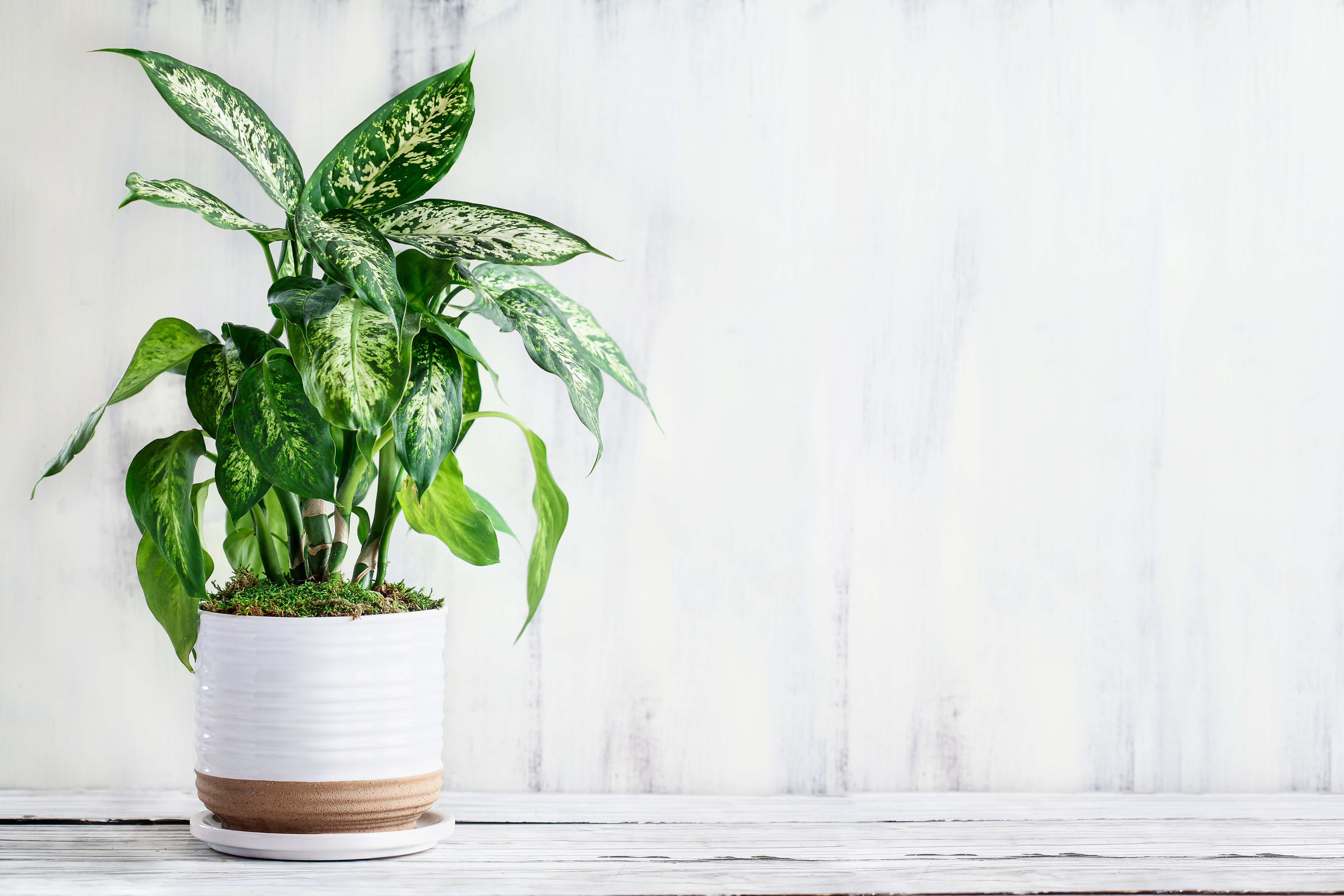This Eco-Friendly Siesta Key Home Doesn't Skimp on Style
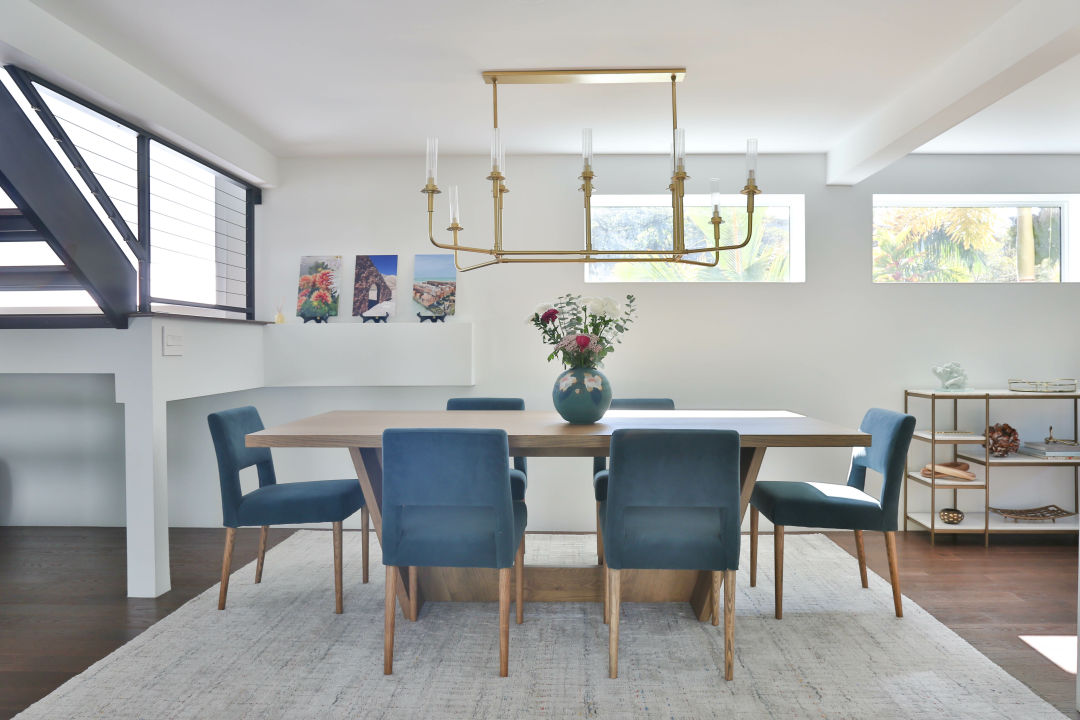
Eco-friendly furniture and textiles.
Image: Rachel Collet
By now, most of us know terms like fair trade, sustainable and eco-friendly. But how to recognize those items when outfitting our homes can be a little tricky.
Enter Sarit Marcus, an interior designer and consultant, who started Minted Space, an online sustainable home furnishings store with a focus on how to do just that. She’s relocating her family from Tampa to Siesta Key and shared pictures of her eco-friendly new space, plus tips for how to get started on your own without skimping on style.
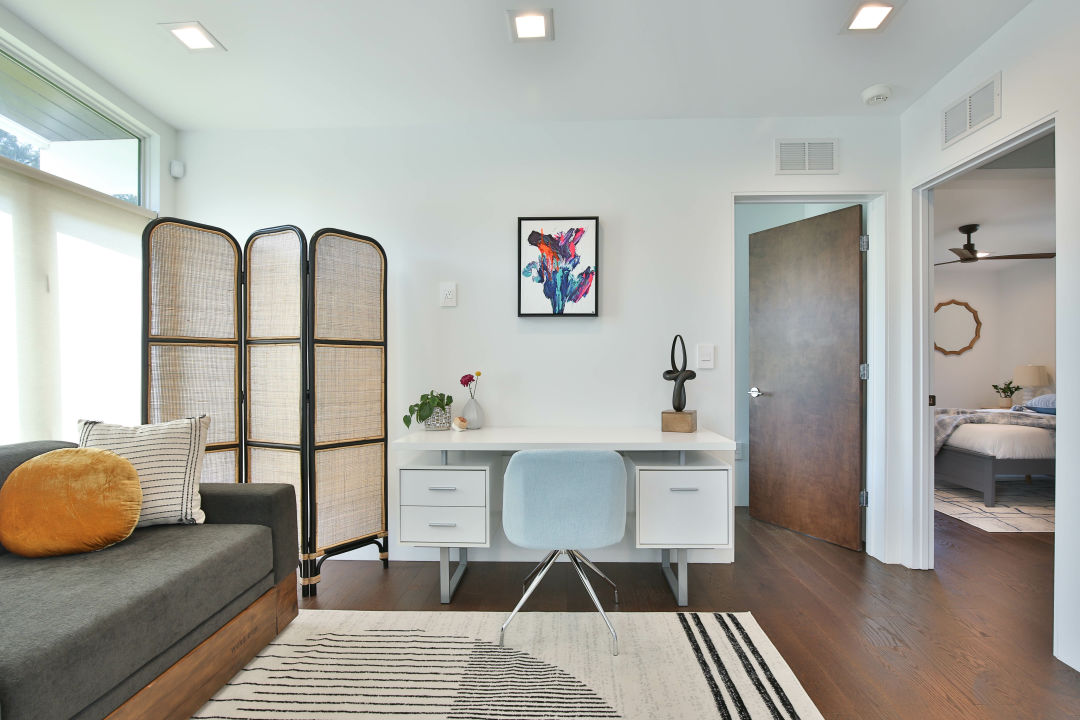
Recycled polyester rug.
Image: Rachel Collet
Just a short time ago, shopping for home items with that sustainable mindset was a feat.
“When my family and I moved to the area three years ago, it was important for me to buy eco-friendly products," Marcus says. "But it wasn’t easy, and for most people, that can be a deterrent. When you can’t find what something is made of and it takes too long, you’ll just buy the status quo.”
That's why she started her online store, where it's easy—and stylish.
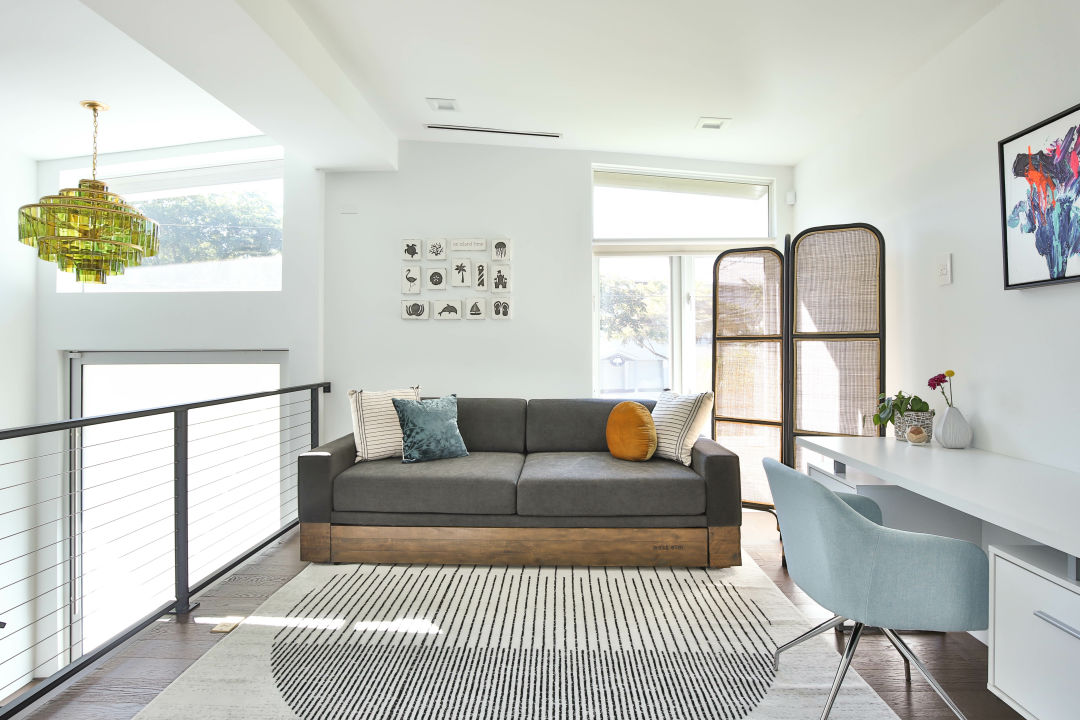
This chandelier is made with recycled glass.
Image: Rachel Collet
“Sometimes, when people hear the term 'eco-friendly,' they think of the hippy esthetic and don’t think it looks chic. But you can have the look without hemp or jute!” she says.
From ceiling lighting to floor coverings to all of the furniture and décor in between, almost every piece in her Siesta Key home is sustainable or fair trade, made from natural, reclaimed and recycled materials.
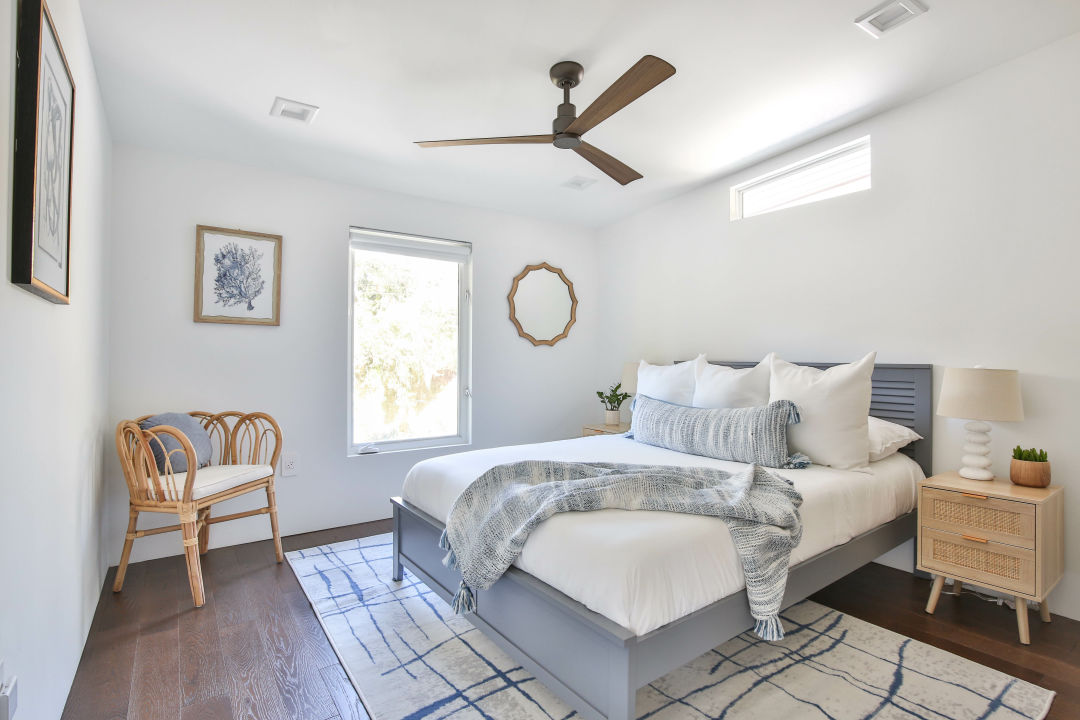
Natural textiles like cotton and linen, versus polyester, are better for the environment because they can decompose.
Image: Rachel Collet
The entryway chandelier is made of recycled wine bottles with a gold leaf finish and has LED bulbs. Sustainably sourced furniture is made with eco-friendly materials. FSC-certified reclaimed wood is used throughout the home; sustainably sourced bedding; recycled polyester rugs and absent is the use of slow growth woods.
And the pieces aren't as expensive or exclusive as they used to be.
“I’m seeing more big names offer an eco-friendly filter in their online stores,” Marcus says. “About 10 years ago, it was substantially more expensive, even for LED lighting. But today I would say eco-friendly products may have roughly a 10 percent markup from the alternative.”
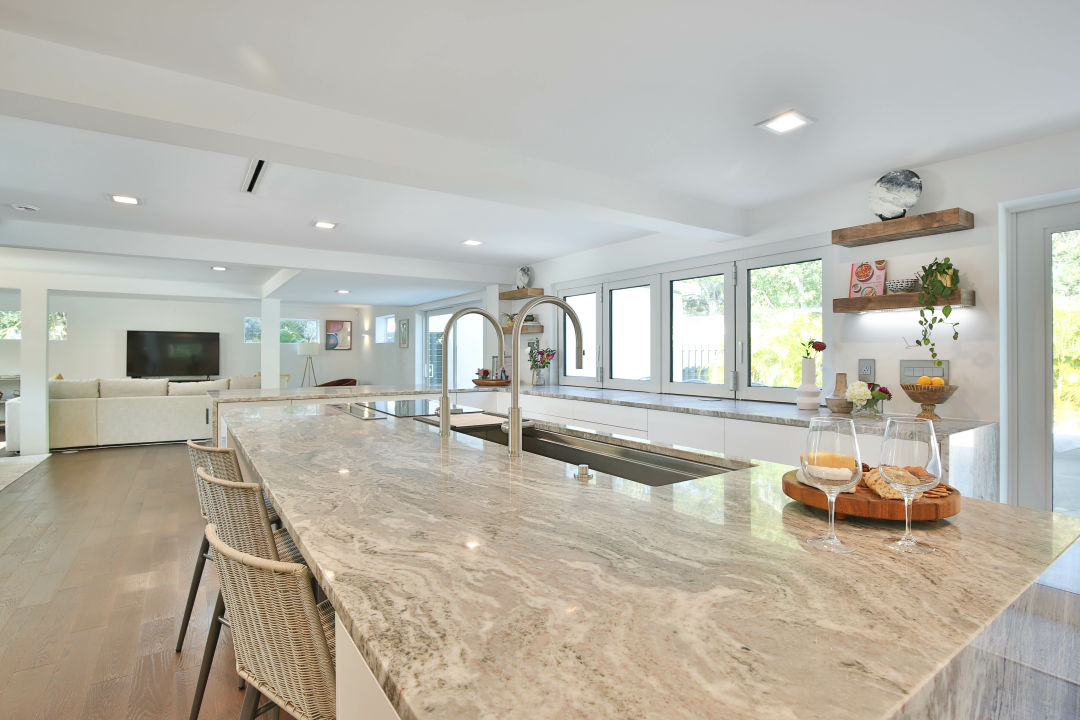
Reclaimed wood shelves in the kitchen.
Image: Rachel Collet
Tips for how to make your home eco-friendly.
Avoid the “hazardous handful” that are toxic and harmful to the environment and people. They are fluorinated stain treatments–these are often used to “stain guard” sofas and furniture; flexible polyurethane foam (PFA) and polyvinyl chloride (PVC), often used to make outdoor furniture, but take many years to break down; volatile organic compounds (VOCs), common in paint, and which, once applied, releases toxins in the air; flame retardants, which are often present in mattresses; and furniture that has medium-density fiberboard (MDF), which often has toxic formaldehyde in its adhesives. Ideally don’t buy polyester, either, because it's made of plastic. "It doesn’t have toxins, but it doesn’t biodegrade,” Marcus says.
Bring the outdoors in. "Think houseplants, adding natural light sources with skylights, and installing living walls inside the home," Marcus says.
Opt for energy-efficient appliances with the "Energy Star" certification to reduce your consumption. "Water Sense" is another term for water-efficient technology when shopping for bathroom and kitchen fixtures.
Wool, cotton, linen, hemp, and jute are natural fibers that require less water for production compared to their synthetic counterparts. When those aren't an option for sofas or chairs, look for materials that include recycled polyester and nylon as opposed to virgin materials.
Opt for sustainably sourced wood so you’re not contributing to deforestation. Mango and rubberwood are eco-friendly because the trees grow back quickly. So are pine wood, bamboo, rattan, cane and seagrasses. Avoid slow-growing woods like oak, teak, and mahogany, which are not sustainable, as they take a very long time to mature. “If you do buy oak, look for Forest Stewardship Council (FSC) certification, so you know it’s done sustainably,” Marcus says.
Use LED light bulbs. “They’re 90 percent more efficient,” Marcus says. And opt for solar-powered outdoor lighting.
